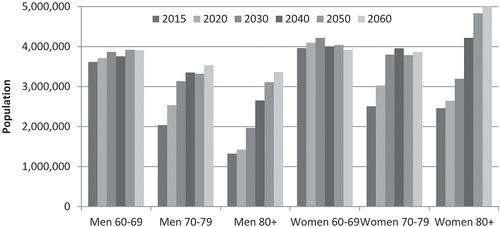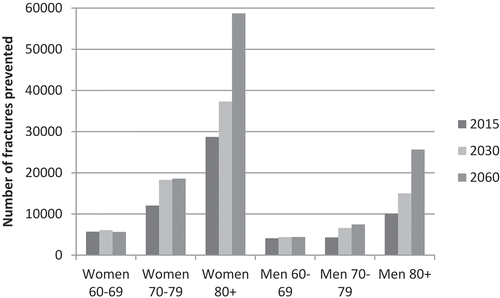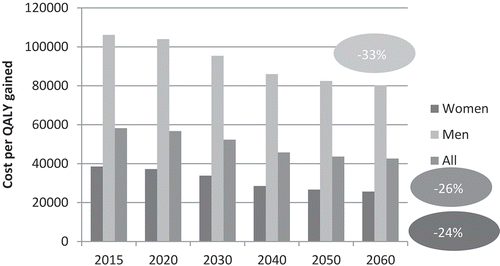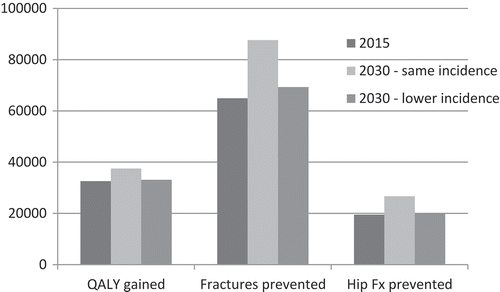Figures & data
Figure 1. Projections of population estimates in the general French population aged over 60 years (based on data from INSEE).

Figure 2. Projection of the impact of the recommended intake of fortified dairy products on the number of all fractures (a) and of hip fractures (b) prevented.

Figure 3. Projection of the impact of the recommended intake of fortified dairy products on number of fractures prevented per gender and age group.
The bars represent the number of fractures prevented with an appropriate intake of fortified dairy products during the years 2015, 2030 and 2060, and stratified according to age range and gender.

Figure 4. Projection of the cost per QALY gained of the appropriate intake of fortified dairy products compared with the absence of appropriate intake.
The bars represent the cost (in €) per QALY gained of the appropriate intake of fortified dairy products for the year 2015, 2020, 2030, 2040, 2050 and 2060. Analyses are presented overall as well as for men and women separately. The decrease (in %) in the cost per QALY gained between 2015 and 2060 are reported in the circles.

Figure 5. Sensitivity analysis on the effect of dairy products on public health outcomes according to trend of fracture incidence.
The bars represent the total effects (expressed in total QALYs gained, total number of fractures prevented and total number of hip fractures prevented) of the appropriate intake of fortified dairy products for the years 2015 and for the year 2030 assuming a similar fracture incidence than actually and a decrease in fracture incidence.

